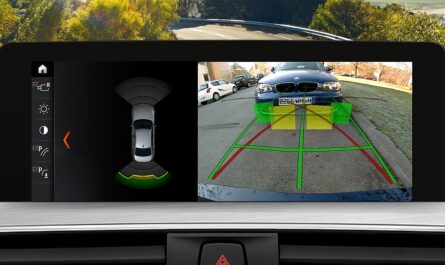A Programmable Logic Controller or PLC has become one of the most commonly used industrial digital computers for automation of processes and machinery. This article aims to provide readers with an overview of PLCs – what they are, their history, key components, programming and applications across various industries.
History and Evolution of PLC
PLCs were first introduced in the late 1960s to replace hard-wired relay panels used in industrial control systems till then. The first Programmable Logic Controller was developed by Bedford Associates of Bedford, Massachusetts in 1969. It had the ability to be reprogrammed to suit any control logic compared to hard-wired systems. This paved way for wider applications of PLCs across industries.
Through the 1970s and 80s, PLC hardware and software capabilities evolved significantly. Earlier PLCs had limited I/O capabilities, memory and programming features. Gradually more powerful processors, greater memory, communications capabilities and programming languages were integrated into newer PLC models.
Today’s modern PLCs support advanced programming functions, multi-tasking, communication over industrial networks, multimedia HMI interfaces, integrated motion control capabilities and data storage features. They have become more powerful, user-friendly and integrated with other industrial automation components.
Key Components of a PLC
A typical PLC system consists of the following main components:
– Central Processing Unit (CPU): The brain of the PLC which executes user programs to control processes. CPU functions include program storage, scanning of inputs/outputs, processing and execution of user logic.
– Power Supply: Provides regulated voltage to various electronic components in the PLC.
– Input/Output Modules: Connect field signals from sensors and actuators to the PLC backplane bus. Common I/O modules include digital I/O, analog I/O, special function I/O.
– Programming Terminal/HMI: Used to develop, monitor, modify and troubleshoot PLC programs. HMIs provide operator interfacing.
– Communication Ports: Allow PLC to interface with HMIs, computers and other controllers over Ethernet, Fieldbus, wireless etc.
– Memory: Stores programs, data logs, recipes and other information for execution. Memory types include RAM, ROM, EEPROM etc.
PLC Programming
PLC programs are developed using ladder logic, graphical function block, structured text based languages conforming to international standards like IEC 61131-3. Ladder logic resembles relay ladder diagrams resembling real-world control circuits. Modern PLC programs support extensive networking, database connectivity, motion control, etc.
Programs are downloaded to the PLC CPU using programming terminals/HMIs. Operating the PLC as per user logic involves continuous scanning of inputs, executing the program, updating outputs. Program changes can be easily made as per process requirements. Advanced PLCs support high-level languages, online editing, function blocks, modular programming and documentation features.
Applications of PLCs
PLCs are widely used across many industries for automation of manufacturing processes, building management systems, irrigation control, traffic control systems and more. Some common industrial applications of PLCs include:
– Automotive Manufacturing: Assembly lines, material handling, quality testing, inspection processes.
– Food Processing: Packaging machinery control, bottling lines, candy/bakery product manufacturing.
– Pharmaceutical: Tablet pressing, capsuling, liquid/cream filling, labeling, packaging.
– Water and Wastewater Treatment: Monitoring processes like filtering, chlorination, disposal.
– Oil and Gas: Pipeline monitoring, pumping stations, offshore rig controls.
– Equipment Monitoring: Motors, pumps, HVAC, conveyors, CNC machines condition monitoring.
– Building Automation: Lighting, HVAC, access control, security, CCTV, fire alarms, elevators.
PLCs have replaced fixed relay controls across various manufacturing and process industries providing flexibility, reliability and ease of maintenance.
Trends in PLC Technology
With the evolution of Industry 4.0 concepts, newer technologies are being integrated with traditional PLC systems. Some prominent PLC technology trends include:
– Integration with cloud platforms facilitating remote access, analytics and asset monitoring from anywhere.
– Open source and modular hardware platforms for cheaper custom applications.
– Edge computing capabilities decentralizing intelligence closer to field level.
– Use of advanced technologies like twin plants for virtual commissioning and AI for predictive maintenance.
– Adoption of open communication standards allowing integration of multi-vendor components.
– Motion control integration and advanced motion control capabilities for sophisticated machinery.
– Cybersecurity enhancements for protecting industrial operations from vulnerabilities.
– Support for mixed reality and augmented operator training applications in future.
Over the past few decades, PLCs have revolutionized industrial automation by replacing rigid hard-wired systems with flexible, programmable controls. Further developments assimilating new technologies will bring even smarter, connected and decentralized automation solutions. PLCs will continue playing a crucial role in industrial digital transformation through Industry 4.0 in the coming years.
*Note:
1. Source: Coherent Market Insights, Public sources, Desk research
2. We have leveraged AI tools to mine information and compile it



